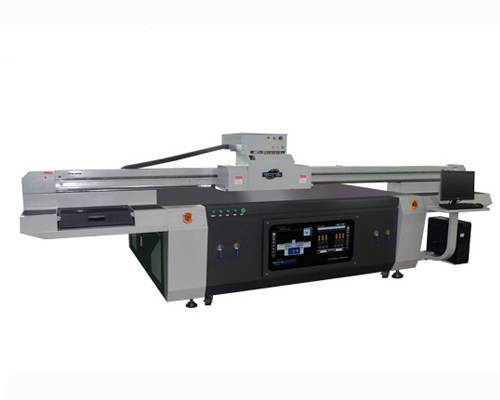Technical Support
The reasons of bad UV ink curing problems
- 2016-09-09 16:16:05
-
Our after-sales staffs are often required some advice about UV ink curing problems of UV digital printing, including incomplete UV curing and sticky surface phenomenon, leading a bad printing effect. How ink curing problems happen and how to solve them for a ideal printing? Here are some tips for you.

Weak power of UV LED curing light
There are three elements of UV LED curing technology: spectrum, light intensity and ink curing speed. The first element refers that the spectrum of UV LED light is consistent with the absorption spectra of curing material. The second element refers whether the intensity of UV light emitted is strong enough to cure ink through photochemical reactions. The actual requirements differ for different curing inks or UV coatings with different agent’s properties, light transmittance, amount, feeling and so on. In terms of UV curing speed, it can not too fast leading incomplete curing problem or too low to adversely affect the curing, such as cracking and poor adhesion. The cure rate is different because of different curing materials.Besides, fast print speed of UV printing machine will cause incomplete curing and sticky surface, too. In this case, you can reduce print speed or increase UV LED lamp power.Aging UV curing light
UV curing light is to emit ultraviolet light and accompanying heat. All lights have relatively long or short limit service life, such as UV LED light and mercury lamp. In the process of its usage, electrode decompose gradually and the inner wall of the tube to produce deposition, leading gradual weakening of transparency and ultraviolet light transmittance. Therefore, UV printing machine should be regularly detected on the curing lamp, and timely replaced the lamp.Slow UV curing speed of printing ink itself
Light curing refers to UV inks or UV coatings cured from liquid to form patterns by photochemical reactions under effective UV irradiation. This problem can be solved by adding light curing accelerator, lowering print speed or asking UV ink suppliers for solutions.YOTTA here to remind that some ink manufacturers may use ethanol to dilute UV inks, which should to be avoided. Because excessive ethanol can affect the degree of light curing, resulting in incomplete ink curing or sticky surface. If you need to reduce ink viscosity, UV ink diluent is a good choice.More info about UV printer: http://www.yo-da.com.
- Previous [Return Home] [Print] [Go Back] Next
Products Search
Contact Us
Contact Person:
Sales DepartmentTel:
+86-755-89915058Fax:
+86-755-89621558E-mail:
peter@yottaprinter.com




